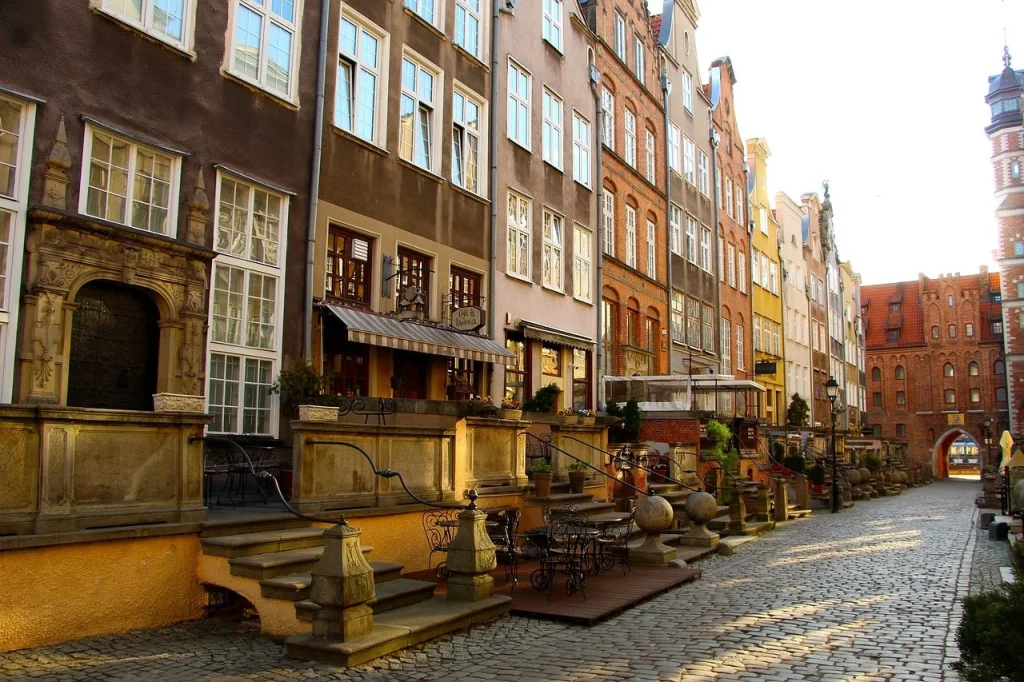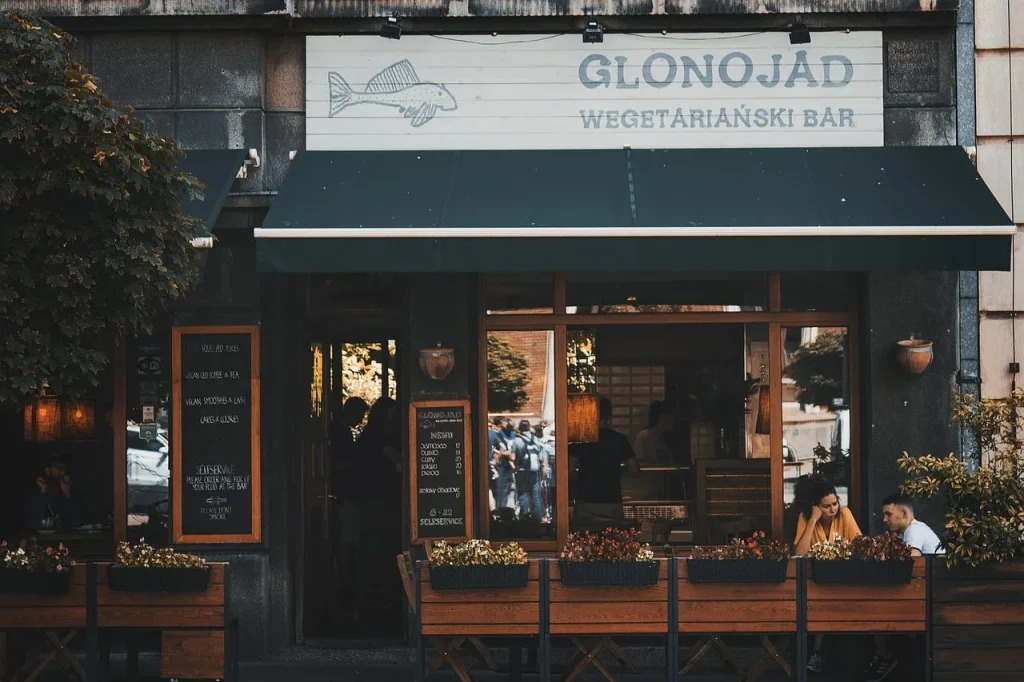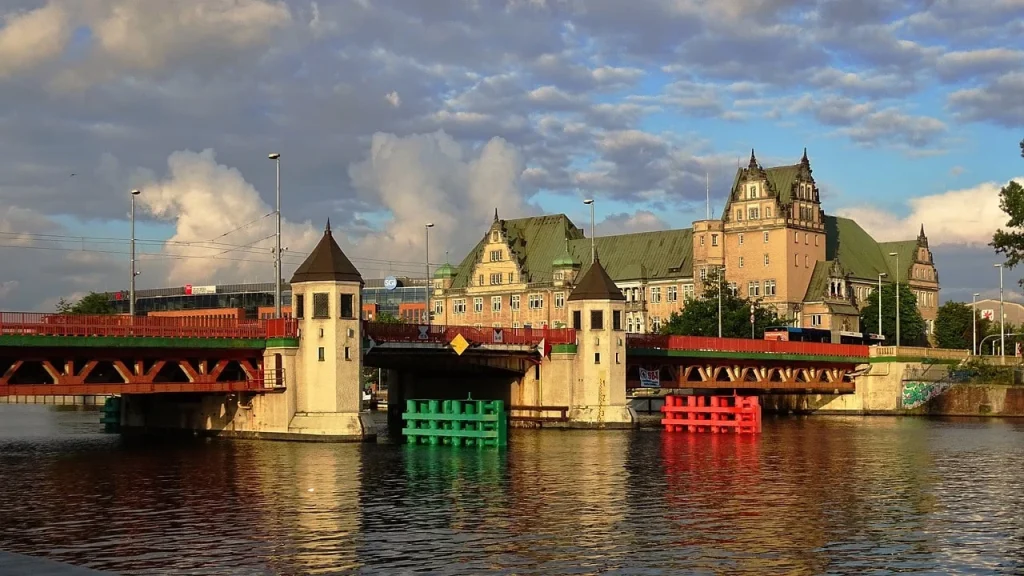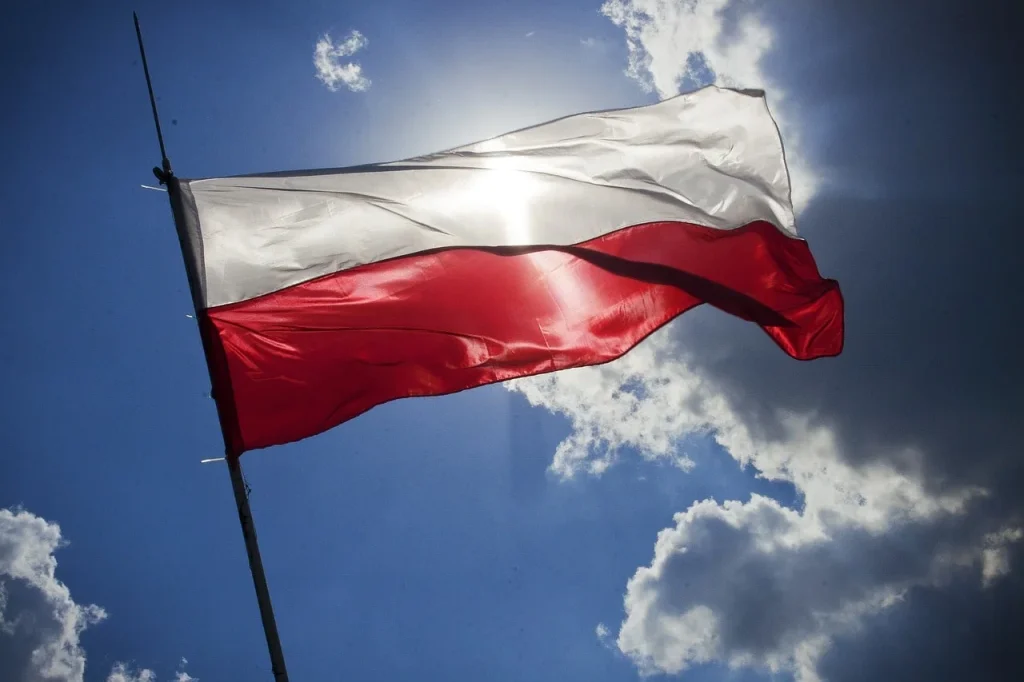Have you ever wondered what makes Poland so special? Nestled in the heart of Europe, Poland is a country that boasts an intriguing history, stunning landscapes, and a rich cultural tapestry.
Today, we ‘ll explore some interesting facts about Poland, each revealing a different facet of this dynamic country. From its legendary figures to modern-day innovations, get ready to discover the many reasons why Poland captivates the hearts of those who visit.
Poland has not yet perished, so long as we still live.
Józef Wybicki
Poland Facts
As you embark on this journey through the fun facts about Poland, keep in mind that a quiz awaits at the end of this article. Read carefully to prove your expertise on all things Polish!
- The nation has an official National Day of Remembrance for the “Cursed Soldiers”—anti-communist partisans who fought against state oppression after WWII.
- Marie Curie, born in Warsaw, was the first person to win Nobel Prizes in two different sciences.
- The geographical center of Europe is often claimed to lie within its borders, marked by a monument near the village of Suchowola.
- Wrocław houses one of the oldest zoos in Europe, established in 1865.
- The last successful cavalry charge in history took place during the Battle of Komarów in 1920, involving the Polish army.
- Jagiellonian University, established in 1364, is the second oldest university in Central Europe.
- It’s a superstition in this country to avoid passing the salt hand to hand, as it’s believed to bring bad luck.
- The traditional Christmas Eve meal, known as Wigilia, includes precisely twelve dishes, symbolizing the twelve apostles.
- Białowieża Forest, straddling the border with Belarus, is one of the last and largest remaining parts of the immense primeval forest that once spread across the European Plain.
- The world’s first constitution in modern Europe was adopted here on May 3, 1791.
- The Wieliczka Salt Mine, with underground tunnels and sculptures carved from rock salt, has been in continuous operation since the 13th century.
- The country boasts 17 Nobel Prize winners, including four Peace Prizes and five in Literature.
- In 1980, the Solidarity movement, which began in Gdańsk, became the first independent labor union in a Soviet-bloc country.

- Legend has it that the name ‘Warsaw’ (Warszawa) originates from a fisherman, Wars, and his wife, Sawa.
- The symbol of the capital, the Mermaid, is featured prominently in its coat of arms.
- It is customary to celebrate Name Days—the feast day of a saint after whom a person is named—often considered more important than birthdays.
- The iconic dish, Pierogi, is a staple and has been made in various forms since the 13th century.
- Chopin’s heart is preserved in a pillar of the Holy Cross Church in Warsaw, while the rest of his body rests in Paris.
- Malbork Castle is the largest castle in the world by land area and was built in the 13th century by the Teutonic Knights.
- Polish-born astronomer Nicolaus Copernicus was the first to propose that the Earth is not the center of the universe.
- Łódź features a unique museum dedicated to the art of origami, the only one of its kind in Europe.
- Kraków’s Main Market Square is one of the largest medieval town squares in Europe, dating back to the 13th century.
- The country has won the most world’s Strongest Man competitions of any nation, with a total of 11 titles.
- Despite its landlocked beginnings, it now boasts over 700 km of coastline along the Baltic Sea.
- The Crooked Forest, located near Gryfino, is a mysterious site where nearly 400 pine trees grow with a 90-degree bend at the base.
- St. Mary’s Trumpet Call, played hourly from the highest tower of St. Mary’s Basilica in Kraków, breaks off mid-melody in honor of a historical trumpeter who was shot in the throat while alerting the city of a Mongol invasion.
- Mikołaj Kopernik, known globally as Copernicus, was not only an astronomer but also a polyglot, mathematician, and economist.
- The Hejnał mariacki, played from St. Mary’s Basilica in Kraków, is broadcasted by national radio daily at noon.

- The country’s highest point is Rysy, standing at 2,503 meters, located in the Tatra Mountains.
- Zubrówka vodka, infused with bison grass, is one of its unique contributions to global spirits.
- The first oil refinery in the world was built in 1856 by Ignacy Łukasiewicz, a Polish pharmacist.
- Henryk Sienkiewicz, who won the Nobel Prize in Literature in 1905, is best known for his epic Quo Vadis, set in ancient Rome.
- Polanica Zdrój, a spa town, is famous for its mineral springs and has been a health retreat since the 1700s.
- The Museum of Papermaking in Duszniki Zdrój is housed in a 17th-century paper mill and is one of the few such museums in Europe.
- The world’s largest castle, measured by land area, is Malbork, constructed by the Teutonic Knights.
- The first known depiction of a pretzel, a snack now enjoyed globally, appears in the 12th-century Hortus deliciarum manuscript from Silesia.
- It was among the first nations in Europe to establish a national education system, with the Commission of National Education created in 1773.
- Warsaw’s Old Town was meticulously rebuilt after WWII and is now a UNESCO World Heritage site.

- Poland’s native conifer, the Polish larch, was transported to and planted in England in the 17th century, becoming widespread across the UK.
- The country has a ‘Flag Day’ celebrated on May 2, a relatively new national holiday established in 2004.
- One of the most popular children’s books, The Very Hungry Caterpillar, was first printed in Poland in 1969.
- Gniezno was the first capital of Poland, a fact less known compared to the prominence of Warsaw and Kraków.
- “Pan Tadeusz,” the national epic, is actually a poetic novel written by Adam Mickiewicz detailing the country’s 18th-century nobility and their lifestyle.
- Lech Wałęsa, a former electrician, led the Solidarity movement that eventually toppled communism.
- It is one of the world’s biggest producers of apples, with a significant portion of its output exported across Europe.
- Warsaw was almost entirely destroyed during World War II, with over 85% of its buildings razed.
- The traditional folk craft of creating colorful Pisanki, or intricately decorated Easter eggs, is a centuries-old practice.
- It was among the first countries in Europe to enact women’s suffrage, granting women the right to vote in 1918.
- In the town of Zalipie, homeowners traditionally paint their houses with floral motifs, a practice intended to cover up soot marks from stoves.
- The city of Sopot is known for having the longest wooden pier in Europe, extending 515 meters into the Baltic Sea.
Poland Myths

Now that we’ve explored the facts, let’s separate truth from myth. What you’ve heard about Poland might not always align with reality, and we’re here to clear the air.
- Poland is a land of perpetual winter
The climate in Poland features four distinct seasons. Warm summers and mild autumns are enjoyed by the people, with temperatures reaching up to 30°C (86°F) in summer. Winters can be cold, but the entire year is not spent under snow and ice. - Polish food is bland
Polish cuisine is rich and varied. Flavorful dishes such as pierogi, bigos, and żurek are enjoyed. The food often features spices and herbs, providing a delicious and diverse culinary experience. Traditional meals are hearty and filled with robust flavors. - Poland is a poor, undeveloped country
It has a strong and growing economy. Since joining the European Union in 2004, significant development and modernization have occurred. The country boasts a high standard of living and vibrant cities like Warsaw and Kraków, showcasing modern infrastructure and thriving industries. - Poles are unfriendly to foreigners
Polish people are known for their hospitality and warmth. Visitors are often welcomed with open arms and are treated with kindness. While some might initially seem reserved, once conversations begin, genuine friendliness and helpfulness are commonly experienced. - Polish culture is monolithic
It has a rich tapestry of cultural influences. Throughout its history, it has been shaped by various ethnic groups and cultures. This diversity is reflected in its art, architecture, and traditions, making Poland a culturally vibrant and varied country.
Poland Quotes

Noted figures throughout history have offered insightful perspectives on Poland. Their words capture the nation’s resilience, complexity, and enduring spirit. Let’s read some together.
For your freedom and ours.
Polish national motto
Often attributed as a motto during Polish uprisings, this phrase highlights the commitment of Poles not only to their own liberty but to the freedom of others.
Poland is the natural bridge between East and West.
Joseph Conrad
Joseph Conrad, a celebrated Polish-British writer, referred to Poland’s geographical and cultural position in Europe as a connector of diverse worlds.
I am proud of my heart alone, it is the sole source of everything, all our strength, happiness and misery. All the knowledge I possess everyone else can acquire, but my heart is all my own.
Johann Wolfgang von Goethe
Goethe, a German poet, deeply admired Polish pianist and composer Frederic Chopin, and this quote reflects his sentiment on personal integrity and uniqueness, which he associated with the Polish spirit.
Hope is the mother of fools.
Polish proverb
This Polish saying captures a certain skepticism inherent in the national character, warning against the perils of naive optimism.
The history of Poland is a vast heroic poem of a nation whose life is interwoven with the very principles of freedom and chivalry.
George Bancroft
George Bancroft, an American historian, celebrated Poland’s history and national character, emphasizing its long struggle for freedom and justice.
Poland FAQ

Now that you’ve explored the quotes, it’s time to continue into the FAQ section. Remember, this is the final part before the quiz, so read carefully!
- What is the capital of Poland?
The capital of Poland is Warsaw. - Is Poland part of the European Union?
Yes, it has been a member of the European Union since May 1, 2004. - What is Poland famous for?
It is famous for its rich history, medieval architecture, delicious cuisine (such as pierogi), and contributions to music and science. - What are some popular tourist attractions in Poland?
Popular tourist attractions include the historic city of Kraków, the Wieliczka Salt Mine, and the Auschwitz-Birkenau Memorial and Museum. - What currency is used in Poland?
The currency used in Poland is the Polish złoty (PLN).
Poland Trivia

Welcome to our Polish quiz challenge! If you don’t score any points, be prepared to be haunted by the ghost of Copernicus, insisting you revise your geographical knowledge!
Conclusion
To wrap things up, Poland stands out as a country of remarkable resilience and beauty. Its blend of old-world charm and modern vitality makes it a unique destination. The diverse landscapes, ranging from sandy beaches to towering mountains, offer endless opportunities for adventure.
Poland’s rich cultural heritage, seen in its festivals, cuisine, and traditions, adds a vibrant layer to its appeal. We hope this article has sparked your curiosity. Till next time, stay curious and explore more. Cheers.


